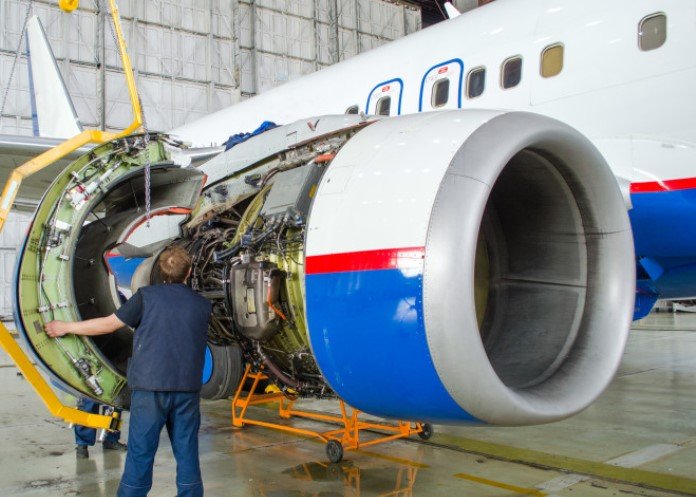The aerospace industry is constantly evolving, with engineers and scientists working tirelessly to make air travel faster, safer, and more efficient. One of the most important tools they use to achieve this goal is Finite Element Analysis (FEA), which has revolutionized the way aircraft are designed and manufactured. In this blog, we’ll take a look at how FEA analysis is transforming the aerospace industry and what makes it so effective.
What is FEA Analysis?
FEA is a computational technique used to model and analyze complex engineering systems. It allows engineers to predict the behavior of a system under various conditions and evaluate its performance and reliability. In other words, it provides a virtual simulation of how a structure or a component will perform in real life.
Advantages of FEA Analysis in Aerospace Industry
1. Improved Design and Optimization
FEA analysis enables engineers to optimize the design of aircraft components and systems before they are manufactured. This reduces the risk of design flaws, improves performance, and ultimately leads to safer and more efficient aircraft. In addition, FEA allows engineers to evaluate multiple design options and select the best one based on the results of the analysis.
2. Reduced Time and Cost
In the past, engineers had to build and test prototypes of aircraft components to evaluate their performance. This process was time-consuming, expensive, and often resulted in design flaws that had to be corrected. With FEA, engineers can test and evaluate different designs in a virtual environment, reducing the time and cost of the development process.
3. Enhanced Safety and Reliability
FEA analysis enables engineers to predict the behavior of aircraft components and systems under various conditions, including extreme loads, high temperatures, and corrosive environments. This information helps engineers make informed decisions about the design and materials used in the manufacture of aircraft components, leading to enhanced safety and reliability.
4. Improved Manufacturing Process
FEA analysis can also be used to optimize the manufacturing process of aircraft components. For example, engineers can use FEA to determine the optimal manufacturing techniques and materials to ensure that the finished product meets the desired specifications. This leads to improved quality, reduced waste, and increased efficiency in the manufacturing process.
Applications of FEA Analysis in Aerospace Industry
1. Structural Analysis
FEA is widely used in the aerospace industry for structural analysis, which involves evaluating the behavior of aircraft structures under various loads and conditions. This includes evaluating the strength and stiffness of structures, such as wings and fuselages, and predicting their response to loads such as wind, turbulence, and G-forces.
2. Fatigue Analysis
Fatigue analysis is used to evaluate the performance of aircraft components and systems over time, including the effects of repeated loads and cycles. This information is critical in ensuring the reliability and safety of aircraft components, particularly in areas such as wing spars, landing gear, and engine mounts.
3. Thermal Analysis
Thermal analysis involves evaluating the behavior of aircraft components and systems under various temperature conditions, including high temperatures during flight and low temperatures during ground operations. FEA is used to predict the temperature distribution, thermal stresses, and deformation of components and systems, and to ensure that they meet the desired specifications.
4. Vibration Analysis
Vibration analysis is used to evaluate the behavior of aircraft components and systems under dynamic loads, such as those encountered during flight. FEA is used to predict the response of components and systems to vibration, including the effects on their structural integrity and performance.
Read Also: A STRAIGHTFORWARD GUIDE ON HOW TO GET YOUR CPR AND AED CERTIFICATION
Conclusion
FEA analysis has revolutionized the aerospace industry by providing engineers with a powerful tool to evaluate and optimize the design, manufacturing, and performance of aircraft components and systems. With its ability to simulate real-life conditions, FEA allows engineers to predict the behavior of aircraft structures and systems under various loads and conditions, reducing the time and cost of the development process and enhancing the safety and reliability of aircraft. Whether it’s for structural analysis, fatigue analysis, thermal analysis, or vibration analysis, FEA is a vital tool for the aerospace industry, helping to improve the efficiency, performance, and safety of aircraft.
In conclusion, FEA analysis is transforming the aerospace industry by providing engineers with a comprehensive and cost-effective solution for designing, evaluating, and optimizing aircraft components and systems. Its ability to simulate real-life conditions and provide valuable insights into the behavior of structures and systems has revolutionized the way aircraft are designed and manufactured, leading to safer and more efficient air travel.





1 Comment
I don’t think the title of your article matches the content lol. Just kidding, mainly because I had some doubts after reading the article.